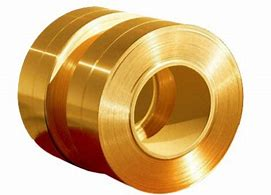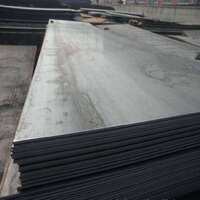1. Introduction
Just this week, architects at the Venice Architecture Biennale unveiled a striking pavilion wrapped entirely in a rust-hued corten steel facade—showcasing how metal clad design continues to dominate sustainable and modern construction. This trend highlights the growing appeal of durable, low-maintenance, and visually bold exteriors made from clad metals.

If you’ve ever wondered, ‘What is metal clad?’—you’re not alone. The term pops up everywhere: from metal clad siding on homes to metal clad electrical wire in commercial buildings. But what does it really mean, and why is it so widely used?
2. What Does ‘Metal Clad’ Mean?
At its core, ‘metal clad‘ (or ‘metalclad’) refers to a material or structure that’s covered or layered with metal for protection, aesthetics, or performance. The phrase ‘clad metal meaning’ simply describes a composite where one metal is bonded to another—like aluminum clad steel or stainless clad aluminum—to combine the best properties of both.
This technique is common in everything from cookware (‘All-Clad‘ pans) to aerospace alloys and building exteriors. In construction, ‘metal clad’ often describes walls, roofs, or entire buildings sheathed in metal panels.
3. Common Types of Metal Clad in Construction
Metal clad systems are incredibly versatile. Here are some of the most popular applications you’ll encounter:
- Metal clad wall: Used for both interior and exterior surfaces, offering weather resistance and sleek design.
- Metal clad roof: Includes options like colorbond standing seam, pac clad standing seam roof, and zinc clad roof—known for longevity and minimal upkeep.
- Metal facade: A broad category covering corrugated steel facade, standing seam facade, and even decorative pac clad column covers.
- Metal clad house or shed: Entire structures built with steel clad or aluminum clad sheet exteriors for durability and modern style.
Materials vary widely—corten steel siding delivers that rugged, weathered look; copper siding ages beautifully into a green patina; zinc metal siding offers corrosion resistance; and exterior corrugated metal siding remains a cost-effective classic.

4. Popular Metal Cladding Materials
Not all metals are created equal when it comes to cladding. Some top choices include:
- Corten steel plate: Famous for its self-protecting rust layer. Corten steel siding cost varies but is often justified by its lifespan and visual impact.
- Zinc facade or zinc clad dormer: Elegant, long-lasting, and eco-friendly.
- Aluminum clad steel: Lightweight and corrosion-resistant—used in everything from roofing to aluminum clad pipe insulation.
- Titanium clad and alloy clad options like 2024 T3 clad or 7075 T6 clad: Common in high-performance industries like aviation.
You’ll also see clad combinations like copper nickel clad, cupro nickel clad, or nickel brass clad copper—engineered for specific thermal, electrical, or chemical properties.
5. Beyond Buildings: Industrial and Electrical Uses
Metal clad isn’t just for architecture. It plays a critical role in infrastructure and manufacturing too.
For example, metal clad electrical wire (including cu clad wire and aluminum clad wire) is armored for safety in commercial settings—yes, it can be used outside and even surface-mounted in places like Pennsylvania, provided local codes allow it.

In heavy industry, you’ll find clad steel used in pressure vessels, while boiler plate steel and thick steel plate form the backbone of machinery. Stainless steel plate grades like 316L or 904L offer corrosion resistance in harsh environments.
Even everyday items rely on cladding: aluminum diamond tread plate for truck beds, stainless steel checker plate for slip resistance, or brass plates for engraving nameplates.
6. Metal Plates and Sheets: The Building Blocks
Many clad systems start with base materials like steel plate, aluminum plate, or stainless metal sheet. These come in countless specs:
- Thicknesses: 1/8 inch steel plate, 3/16 metal plate, 1/4 metal plate, etc.
- Alloys: 6061 T6 aluminum plate, 5083 aluminum plate, 4140 steel plate, or exotic options like inconel 718 plate.
- Finishes: Diamond plate steel, perforated plate, chrome metal via chromium electroplating, or gold coating through electroplating gold.
Suppliers often list ‘steel plate for sale’ or ‘aluminum sheet for sale’ with options like 3mm aluminium checker plate—ideal for both function and form.
7. Installation and Maintenance Tips
Installing metal clad siding—whether vertical standing seam metal siding or corrugated panels—requires proper flashing, fasteners, and expansion allowances. Brands like PAC Clad offer complete systems, including pac clad coping and pac clad HWP trim.
Maintenance is minimal: rinse with water, avoid abrasive cleaners, and inspect seals annually. Corten siding, for instance, needs no painting—it develops its protective patina naturally.
And yes—you can paint metal clad windows or doors if needed, though many prefer the raw metal aesthetic.
8. Conclusion
From a corten steel facade on a downtown loft to aluminum clad stainless steel pipes in a refinery, ‘metal clad’ represents a smart fusion of form, function, and resilience. Whether you’re building a metal clad house, choosing standing seam siding, or specifying clad metals for engineering, understanding the options ensures better performance and lasting value.
Our Website founded on October 17, 2012, is a high-tech enterprise committed to the research and development, production, processing, sales and technical services of ceramic relative materials such as What. Our products includes but not limited to Boron Carbide Ceramic Products, Boron Nitride Ceramic Products, Silicon Carbide Ceramic Products, Silicon Nitride Ceramic Products, Zirconium Dioxide Ceramic Products, etc. If you are interested, please feel free to contact us.
